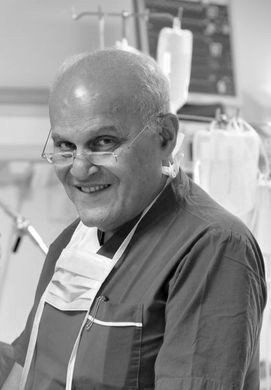The Foundation for Science, Technology and Civilisation (FSTC) is to be commended for their unstinting efforts to help the public understand how various cultures and faiths contributed to the building of our modern civilisation. Unfortunately, awareness of the scientific contributions of scholars from the medieval world in the Middle East, North Africa and central Asia has been consulted by specialists and less by the world-wide public. Recommended readings related to this notion are: Ancient Alexandria and the Dawn of Medical Science by Ismail Serageldin and The Discovery of Pulmonary Circulation by Mohamed El Maghawry. Both are available from www.globalcardiologyscienceandpractice.com.
As a practicing physician and a heart surgeon, I find it astonishing to realise how much was achieved such a long time ago, with nothing remotely like the resources we have in Medicine today; but the intellectual curiosity, and drive to provide treatment for all the sick, whichever strata of society they came from, is truly humbling. All the Cardiologists and heart surgeons of today will know of William Harvey and his treatise on the circulation of the blood, published in 1628, but how many are aware that about 400 years earlier, Ibn Al-Nafis made a major contribution in this field?
I am impressed by the various chapters authored by modern historians of medicine that are assembled by the editor, Professor Peter Pormann. In addition to the passages on Blood circulation, my attention was attracted by the material on Surgery, as it is directly relevant to my profession. Like Ibn al-Nafīs, Abu al- Qāsim al-Zahrāwī, known in the West as Abulcasis (936-1013 Córdoba, Spain), was ahead of his time in developing and using surgical tools some of which are similar to what we use today. How many surgeons today are aware of the surgical part of his 30-volume work Al-Tasrif? This part was translated into Latin by Gerard of Cremona, with various editions published in Venice in 1497, in Basel in 1541, and in Oxford in 1778. The book became a manual of surgery for most European medical schools, such as Salerno and Montpellier, playing a central part in the medical curriculum for centuries.
The choice of the title 1001 Cures like its predecessor publication 1001 Inventions, reminds us of the famous 1001 Nights or the Arabian Nights. These were allegedly stories to entertain the caliph of Baghdad Harun al-Rasheed who, like his son Al-Mamoon, was a patron of the arts and mathematics. During their period the movement of translation of philosophical, cultural and medical heritage of the antiquities to Arabic contributed to the start of new Renaissance of intellectual activities in the Middle East, North Africa and Central Asia in the high middle ages. This is demonstrated in this superb volume. It is a substantial contribution to this important point of the history of Medicine and Healthcare. It comes at a time when the world desperately needs intercultural understanding and appreciation. It is an unalloyed pleasure to commend it to you.

